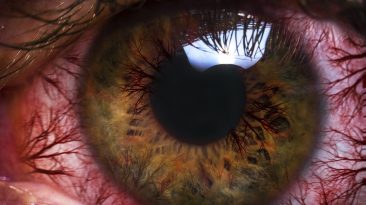A particle accelerator is not some kind of evil super villain torture device. A particle accelerator is used for health, safety, discovery, and for learning more about our universe.
You can’t see what it does, but you can feel it. The question is, can you survive its effects?
Chances are you’ve probably already been exposed to accelerated particles before! So how do you feel?
From x-rays to airport security, treating waste water and killing cancer cells, particle accelerators continue to push the boundaries of human potential. They might even hold the secret to time travel! But with great power, comes great responsibilty… and the potential for some pretty serious accidents.
In 1978, Russian scientist Anatoli Bugorski was checking in on the malfunctioning U-70 synchrotron which, at the time, was the Soviet Union’s largest particle accelerator. Of course, in those days, checking in meant putting your head in there and taking a good, hard look for yourself.
It’s hard to imagine what Bugorski might’ve been looking for, since you can’t physically see accelerated particles. They move nearly as fast as the speed of light.
So when a safety mechanism failed, sending a radioactive beam of protons through Bugorski’s head, the blinding flash of light he saw, “brighter than a thousand Suns,” according to him, wasn’t actually a burst of accelerated particles.
That intense light was the result of 76 billion electron volts being rammed through Bugorski’s skull. For comparison, the standard proton therapy cancer treatment is no more than 250 million electron volts, firing at a speed 300 times less than what Bugorski got.
And yet, Bugorski didn’t feel any pain. The whole thing happened in an instant. But once it was over, Bugorski’s face immediately started swelling. He was rushed to the hospital, where doctors told him he wouldn’t live for much longer.
But Bugorski is still alive today. Half of his face is paralyzed, he’s deaf in one ear, and he suffers from epilepsy. Aside from that, he lives a pretty normal life. So, are particle accelerators safe to touch? Not quite.
By today’s standards, the U-70 synchrotron that shot through Bugorski’s head is actually a very weak particle accelerator. In comparison, the Large Hadron Collider, which is the world’s largest and highest-energy particle collider, fires at about 200 times more power than the U70.
This thing shoots high-energy beams around a ring that’s 27 kilometers (17 miles) long, at a speed that’s equivalent to circling the world 7.5 times per second! The purpose of this is to produce high-energy collisions that will recreate the same conditions that followed the Big Bang that created our universe.
These collisions might create new particles which we’ve never seen before, offering up clues to how you, me, our world, and everything else came into existence. Do you really want your head to get in the way of that?
Check your ego before you hurt yourself, and don’t interrupt a particle collider from uncovering more mysteries. For all we know, time travel is possible! But can you imagine how weird it would be to meet a time traveler?
Subscribe to What-If on YouTube or follow the show on Facebook Watch.
Sources
- “How Particle Accelerators Work”. 2020. energy.gov. Accessed January 31 2020.
- “What Happens If You Stick Your Head in a Particle Accelerator? “. Joel Frohlich, Aeon. 2017. The Atlantic. Accessed January 31 2020.
- “The Large Hadron Collider | CERN”. 2019. home.cern. Accessed January 31 2020.
- “Ten things you might not know about particle accelerators”. Sarah Witman, 2020. Symmetry Magazine. Accessed January 31 2020.
- “The Countless Uses Of Particle Accelerators – FETFX”. 2020. FETFX. Accessed January 31 2020.
- “The Physics of the Death Star”. 2014. Medium. Accessed January 31 2020.
- “What Would Happen if You Stuck Your Head Inside a Particle Accelerator?”. Hrala, Josh. 2016 Sciencealert. Accessed January 31 2020.
- “What happens if you get hit by the main beam of a particle accelerator like the LHC?”. Anthony, Sebastian. 2014. Extremetech. Accessed January 31 2020.
- “How fast is the Large Hadron Collider?”. Team, How. 2012. How It Works. Accessed January 31 2020.
- “The LHC for dummies”. 2008. plus.maths.org. Accessed January 31 2020.



























